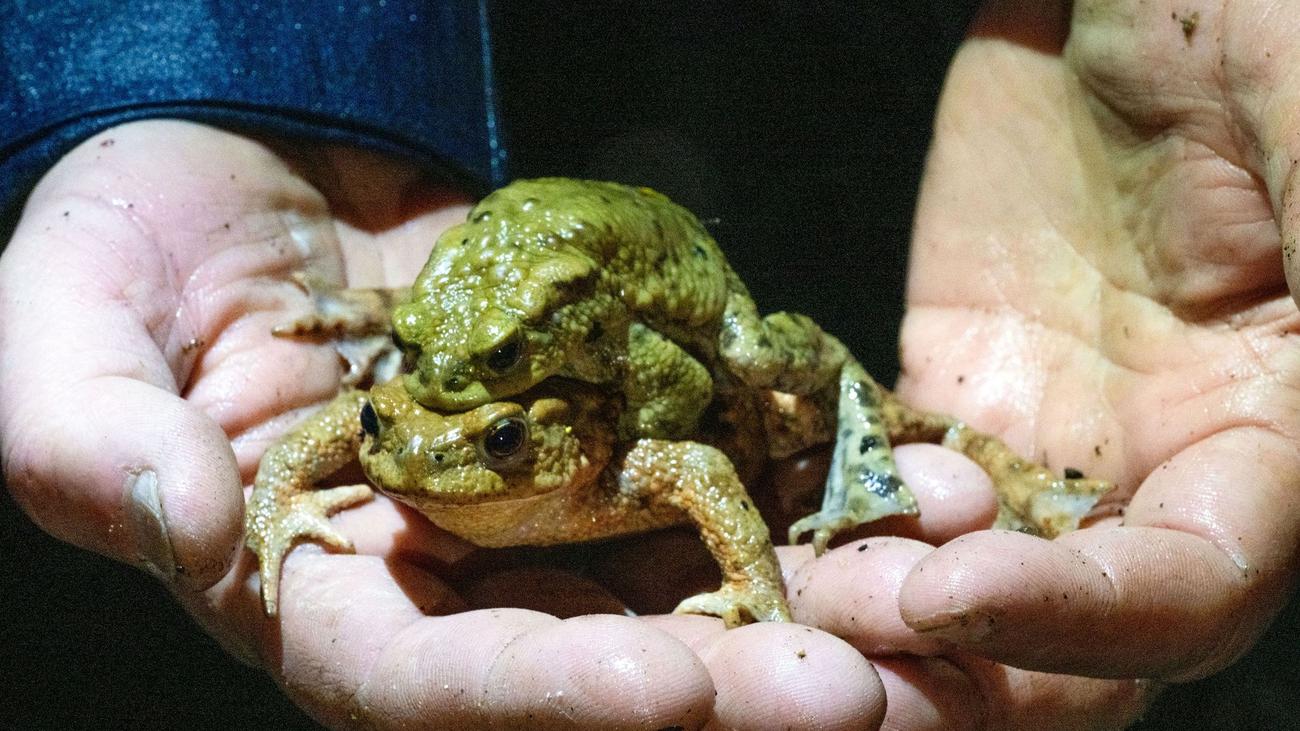
The Annual Amphibian Migration Underway in Mecklenburg-Vorpommern: A Call for Volunteer Support
As spring unfolds across Mecklenburg-Vorpommern, a silent, vital journey is underway: the annual amphibian migration. Toads, frogs, newts, and even the elusive European fire-bellied toad, are stirring from their winter slumber and embarking on perilous treks to their ancestral breeding grounds. This mass movement, however, coincides with the hazards of modern life, particularly roads, which have become deadly obstacles for these vulnerable creatures.
The urgency of the situation becomes starkly clear when considering the countless amphibians that are crushed beneath the wheels of vehicles each year during this period. These losses, compounded by other environmental pressures, contribute to the ongoing decline of amphibian populations throughout the region and beyond. In response to this threat, a dedicated network of volunteers has emerged, working tirelessly to mitigate the dangers and safeguard these vital species.
These unsung heroes of conservation dedicate their time and energy to constructing temporary barriers, primarily made of plastic sheeting, along roadsides known to be amphibian migration routes. These "folienzäune," or foil fences, act as physical obstacles, preventing the amphibians from directly crossing the road and ending up as tragic roadkill. Instead, the amphibians are guided along the fence line towards designated collection points, where volunteers carefully gather them and transport them safely across the road to the other side, allowing them to continue their journey to their breeding ponds.
Christina Augustin, a dedicated conservationist based in Rostock, estimates that between 50 and 100 volunteers are actively engaged in amphibian protection efforts across Mecklenburg-Vorpommern. These individuals are responsible for the installation, maintenance, and daily monitoring of the "Leiteinrichtungen," or guiding structures, ensuring the safety of the migrating amphibians. This dedicated effort highlights the power of community involvement in addressing environmental challenges and protecting local biodiversity.
Mareike Herrmann, a nature conservation officer with the Bund für Umwelt und Naturschutz (BUND), the Federation for Environment and Nature Conservation Germany, in Mecklenburg-Vorpommern, emphasizes the crucial role of volunteerism in amphibian conservation in the northeastern German state. According to Herrmann, the entire amphibian protection effort in the region is almost entirely reliant on the efforts of these dedicated individuals. Every planned intervention, from fence installation to crossing assistance, requires the approval of the lower nature conservation authority, which also provides the fencing materials.
The amphibian migration is not limited to just the spring season. A similar, albeit perhaps smaller, movement occurs in the autumn as the amphibians return from their breeding ponds to their overwintering habitats. This bi-annual migration highlights the continuous vulnerability of these creatures to human interference, necessitating ongoing monitoring and protective measures.
Augustin explains a key aspect of amphibian behavior that contributes to the problem: their remarkable site fidelity. "Toads are incredibly loyal to their birthplace; they always want to return to the body of water where they were born," she states. This strong instinct to return to their ancestral breeding grounds drives them to cross whatever obstacles stand in their way, including busy roads. Unfortunately, the construction of roads and other infrastructure has fragmented their habitats, creating barriers that force them to traverse dangerous areas.
The decline in amphibian populations is a multi-faceted issue, with road mortality being a significant but not sole contributing factor. Augustin points to the growing population of raccoons in the region as another threat. Raccoons are opportunistic predators that readily prey on amphibians, particularly during their vulnerable breeding season. Other factors, such as habitat loss, pollution, and climate change, also play a role in the decline of these sensitive species.
Ute Hennings, the director of the Landesamt für Umwelt, Naturschutz und Geologie (LUNG), the State Agency for the Environment, Nature Conservation, and Geology in Güstrow, highlights the importance of specific habitats for amphibian populations. "The largest amphibian populations are likely to be found in natural areas characterized by numerous small bodies of water, such as the lake district or the Feldberg Lake District," she explains. These areas provide ideal breeding and foraging grounds for amphibians, supporting healthy and diverse populations.
On the island of Usedom, the local nature park authorities take a proactive approach to amphibian conservation. Each year, during the peak of the toad migration, they install approximately 2.3 kilometers of temporary protective barriers and meticulously monitor them. These efforts demonstrate a commitment to protecting amphibian populations within the park’s boundaries.
Despite these localized efforts, a comprehensive, statewide overview of ongoing amphibian protection measures and the number of amphibians counted during the migration does not exist, according to Hennings. This lack of centralized data collection makes it difficult to assess the overall effectiveness of conservation efforts and to identify areas where more targeted interventions are needed.
Recognizing the importance of information sharing and collaboration, the Nabu MV, the Nature and Biodiversity Conservation Union of Germany branch in Mecklenburg-Vorpommern, maintains the website www.kroetenzaeune.de. This website provides updates on ongoing fence monitoring activities and other amphibian conservation initiatives, serving as a valuable resource for volunteers, researchers, and the general public.
Herrmann of the BUND emphasizes the need for more volunteers to assist with amphibian protection efforts. "As soon as you set up a fence, the personnel effort required for its care is high," she explains. Installing the fences is just the first step; they require regular monitoring to ensure their effectiveness and to collect and transport the trapped amphibians safely across the road. Anyone interested in contributing to this important cause can contact the BUND or the Nabu for information on volunteer opportunities. The collective effort of dedicated individuals is essential to ensuring the survival of these vulnerable creatures and the health of the region’s ecosystems. The call to action is clear: lend a hand and help safeguard the amphibians of Mecklenburg-Vorpommern.
